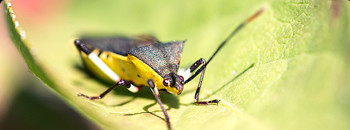Dr. John Stier, Environmental Turfgrass Extension Specialist, Professor and Chair of the Dept. Horticulture-University of Wisconsin, Madison.
As schools begin their “spring” semesters (in unusually cold temperatures in many places), administrations will begin preparing for warmer weather and the many bugs and creatures that come to life with it. Many schools use Integrated Pest Management to protect students from pests – but what does IPM really involve?
Integrated Pest Management (IPM) uses a combination of cultural, biological and chemical approaches to avoid or manage pest problems. Good IPM relies on “best management practices” (BMPs) as the basis for pest management. These include things like keeping tall vegetation away from buildings to help avoid problems with rodents and insects inside the buildings and properly fertilizing lawns and sports turf areas to minimize weed problems. A common misunderstanding is that IPM means “no pesticides.” In fact, IPM allows for well judged use of pesticides when used jointly with best management practices and biological methods (like beneficial insects).
Understandably, effective control of pests is particularly important to schools because large numbers of children are in one location for long periods of time making their potential interaction with pests like bees and poison ivy and pest-control compounds of greater concern. Many states (e.g., Illinois) have, or are considering, mandated IPM in schools to help ensure the safest possible environments for children. The difficulty with requiring IPM is that IPM is a set of practices developed for a specific situation. As such, it requires people with the proper expertise to identify existing and potential pest problems and develop the best approach to deal with the issues.
Most school building and grounds managers are hired for their expertise in mechanical systems (e.g., heating, air conditioning, etc.), rather than for their understanding of biology and pest management. In Wisconsin, we developed training on pest management for school superintendents and buildings and ground managers. More than 90 percent of the Wisconsin public school districts participated in the program during its first several years. Our on-site visits revealed the importance of proper training as many school personnel require specific pest identification and management training to effectively use IPM. We also found school personnel were willing, and often enthusiastic, to learn about pest biology and control.
The U.S. Environmental Protection Agency (EPA), along with many state and university programs, have or are developing procedures to inform parents and assist schools with incorporating IPM principles and practices into their school management systems. Additional information, with links to various state programs and non-governmental organizations such as the National IPM Institute, is available here.
Read more about IPM, especially in schools, on the Kids and Play page.

